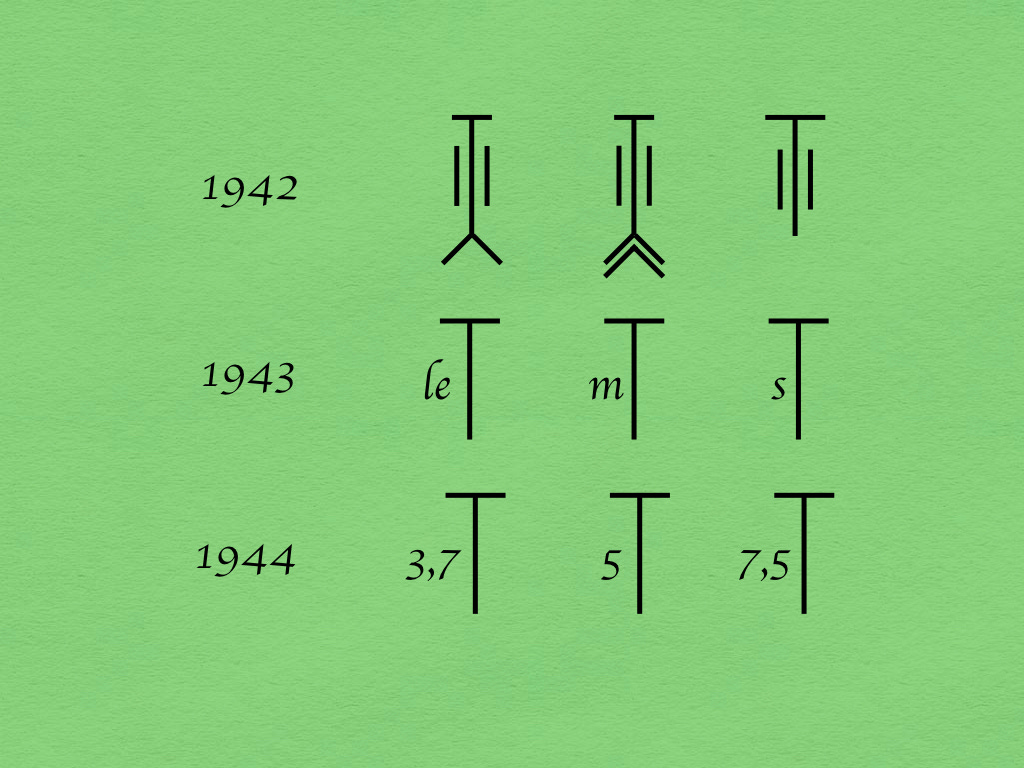During the Second World War, German soldiers wishing to depict anti-tank guns on maps and diagrams faced two considerable challenges. One of these was the frequency with which anti-tank guns of a given type achieved obsolescence. The other was the changes in nomenclature that resulted from the replacement of the anti-tank guns of one generation with the larger, more powerful, weapons of the next.
In 1939, German draftsmen used two symbols to depict anti-tank guns. The first, which combined the three-stroke radical for artillery piece with a single chevron, stood for the (relatively rare) 20mm anti-tank gun. The second, with two chevrons, represented the ubiquitous 37mm anti-tank gun.
In 1941, the introduction of 50mm anti-tank guns created the need for a new symbol. This problem might have been solved by placing the artillery piece radical atop three chevrons. However, rather than doing this, the authorities responsible for standardizing tactical symbols devised a set of three entirely new hieroglyphs.
The common element in all of these new symbols combined the artillery piece radical with a horizontal bar. When used alone, it represented the heaviest anti-tank gun in the German inventory of the day, the Panzerabwehrkanone 97/38. (This weapon consisted of the barrel of a French 75mm field gun mated to a new carriage.)
When the basic symbol for anti-tank gun rested upon two chevrons, the resulting hieroglyph indicated the presence of a medium anti-tank gun. This might have been a 50mm weapon of German manufacture, a 47mm piece of Czechoslovak provenance, or a 45mm anti-tank gun captured from Soviet forces.
A single chevron continued to mark the lightest anti-tank guns in the German inventory. However, the contents of this category had changed. Thus, rather than indicating a weapon with a caliber of 20mm or so, the term “light” applied to such obsolete items of equipment as the British (40mm) two-pounder anti-tank gun and, most especially, 37mm piece that, but a few months ago, had armed nearly all of the anti-tank units in the German Army.
In 1943, the general reform of tactical symbology replaced the counter-intuitive hieroglyphs of 1941 with simple two-stroke figures, each of which was marked by a letter that indicated the weight category to which the weapon in question belonged. The following year, a subsequent reform replaced the weight categories with numbers that indicated the caliber (as measured in centimeters) of the anti-tank gun being depicted.
For further reading: The symbols showcased in this article were found in various order-of-battle diagrams for German formations. For a more systematic explanation of the tactical symbols used by the German Army in World War II, see the guides posted on the website of Leo Niehorster. For an overview of these symbols, see the following article:







